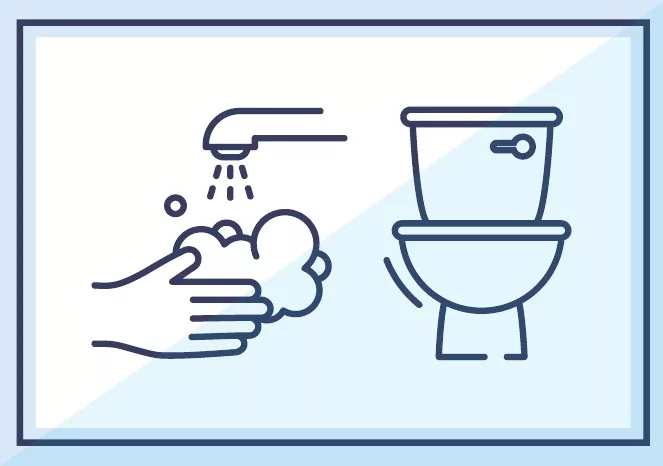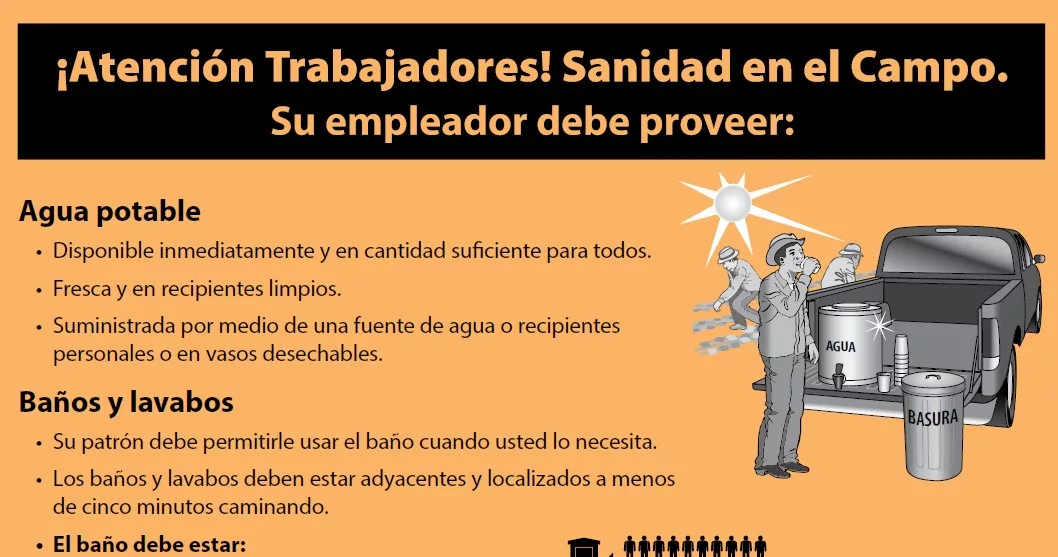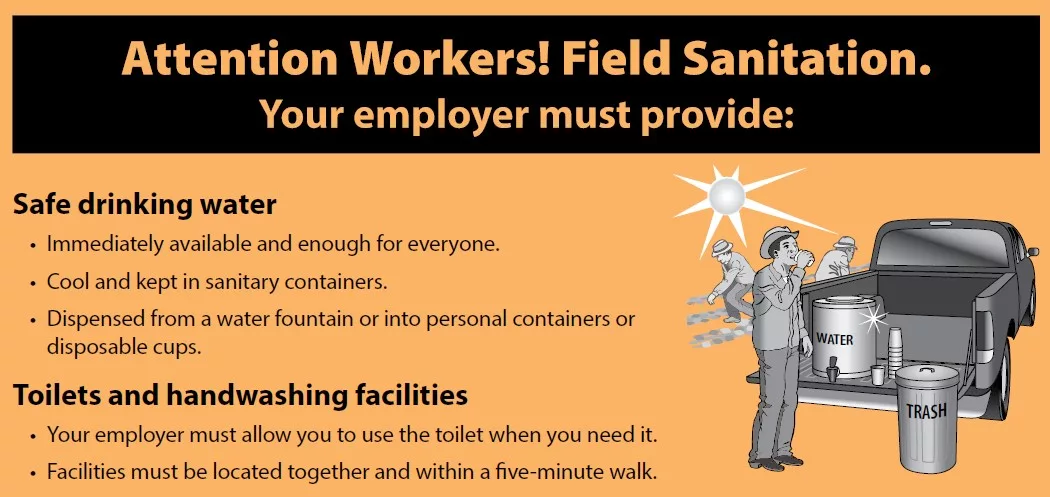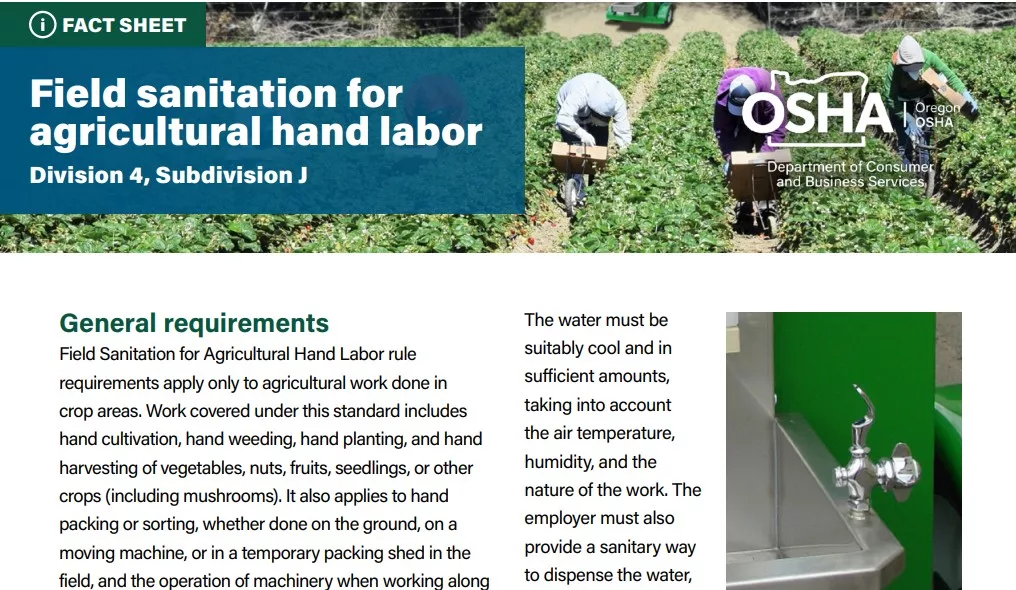
Field Sanitation
Oregon-OSHA Requirements
Division 4, Subdivision J: Field Sanitation for Hand Labor Work
Field Sanitation requirements include drinking water, toilets, hand-washing facilities, and employee notifications that must be provided for workers who do agricultural hand labor.
Employers must comply with Oregon OSHA’s Field Sanitation Standard by doing the following:
- Water must be potable.
- Employers provide a sanitary way to dispense water (through a foundation, with a spigot into single-use cups, etc.).
- Employees may not use dippers or dip cups into common containers.
- Refill and sanitize common water containers as needed.
- Clearly label any non-potable water sources in work areas that are unsafe for drinking, washing, or for use with food.
- At least one toilet for every 20 workers (or portion of 20).
- Toilets (chemical, flush, biological, etc.) can be fixed or portable.
- Where possible, provide separate toilets for men and women and label them using language or symbols easily understood by the workers.
- Toilets must be within a 5-minute or one-quarter mile unobstructed walk for all workers.
- There must always be enough toilet paper.
- Each toilet seat must have a toilet paper holder or dispenser.
- All toilet structures must have doors that latch from the inside, adequate ventilation and screens.
- All toilet structures must be maintained in a safe and sanitary condition.
- Where there are no separate urinals, toilet seats must be hinged and have the ability to be raised and lowered.
- Construction and location must comply with rules of DEQ-Onsite Wastewater Systems and Construction Standards.
- Hand-washing facility must include an adequate supply of potable water, soap, and single-use towels.
- You may not substitute chemical hand cleaners for the soap and water.
- There must be one hand-washing facility for every 20 workers (or portion of 20).
- Hand-washing facilities must be next to the toilet facilities.
- Provide a covered garbage container for used paper towels.
Employers must notify employees of the following:
- The location of sanitation facilities.
- Employees are allowed to use the facilities as frequently as needed.
- Good hygiene practices to minimize exposure to hazards in the field (communicable diseases, exposure to pesticide residues, etc.).
- Employees should drink water frequently, especially on hot days.
- Wash hands before and after using the toilet.
- Wash hands before eating and smoking.
Field Sanitation Notice
- Oregon OSHA’s field sanitation notice must be posted for workers who do hand labor on crops intended for human consumption.
- It is suggested to post the notice at each toilet and handwashing facility and/or where the field workers congregate.
“Safe Practices When Working Around Hazardous Ag Chemicals” Booklet
- Employers must provide a copy of this publication to all employees. Printed copy or mobile version available.
- This publication is also required for the Hazard Communication Standard.

Printable Field Sanitation Summary
A printable PDF summary of OR-OSHA’s field sanitation rules.

OR-OSHA Division 4 Rule Text: Field Sanitation
Read OR-OSHA’s Division 4 rules about field sanitation.

Field Sanitation Notice - Spanish
OR-OSHA’s Field Sanitation poster – Spanish version.

Field Sanitation Notice - English
OR-OSHA’s Field Sanitation poster – English version.

Field Sanitation Fact Sheet
OR-OSHA Field Sanitation fact sheet includes an overview of requirements.

"Safe Practices When Working Around Hazardous Ag Chemicals" Booklet
OR-OSHA booklet for Safe Practices When Working Around Hazardous Agricultural Chemicals – Bilingual version includes both English and Spanish text.


